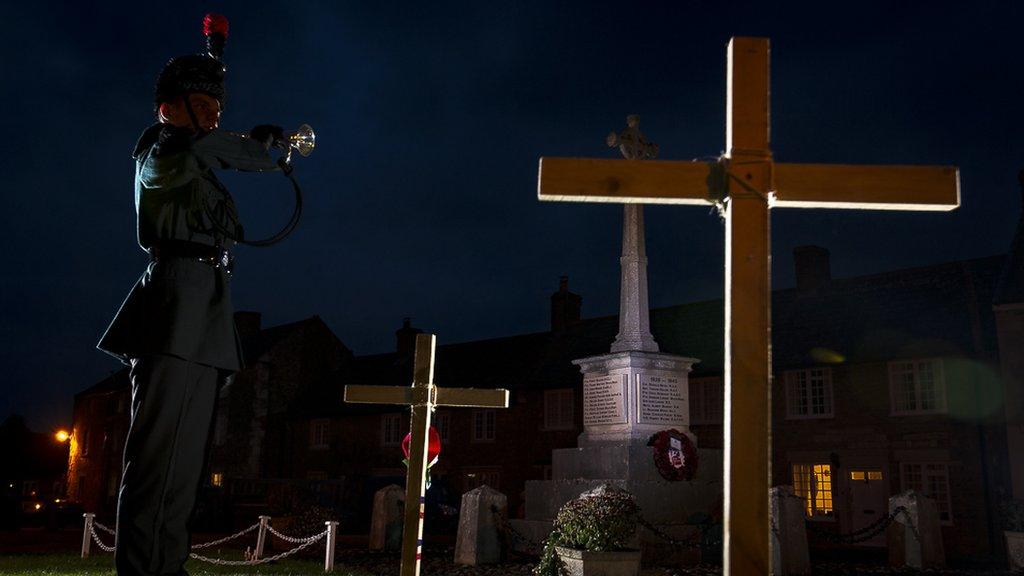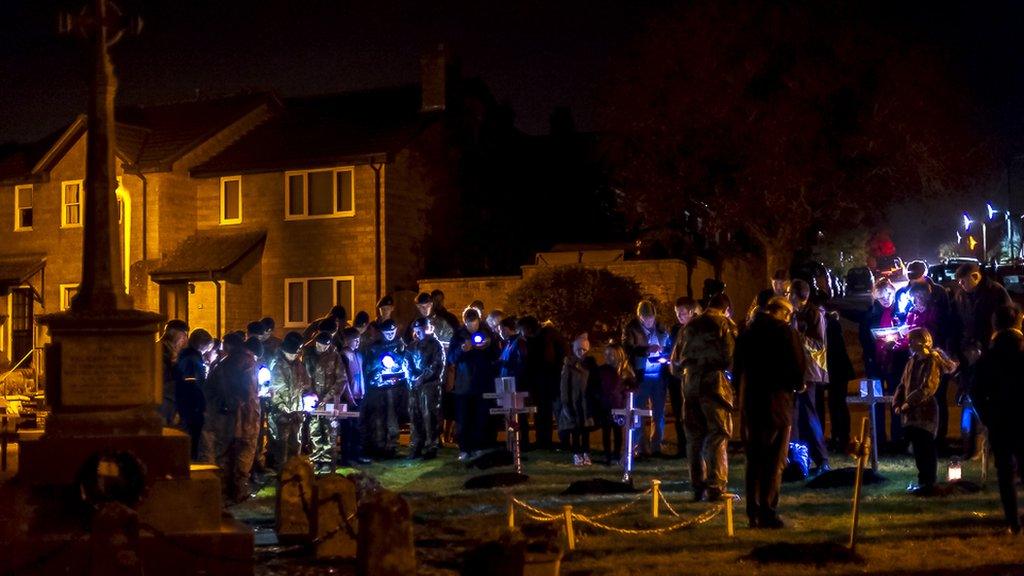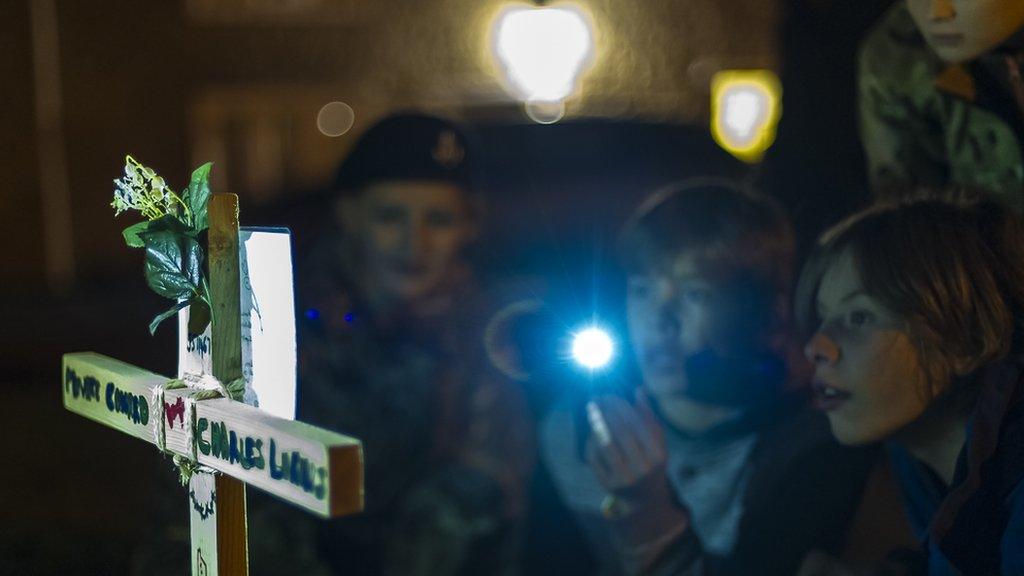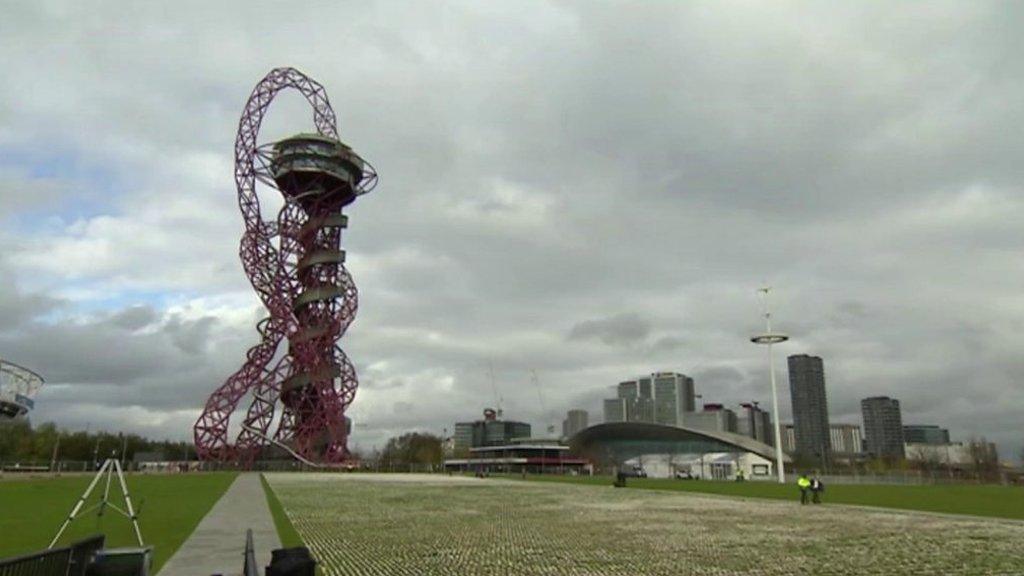Armistice Day: WW1 graves dug on Rode village green
- Published

The graves represent every person who died from the village of Rode during both world wars
A village in Somerset is marking the centenary of Armistice Day by digging graves on its village green.
Each mound represents a man from Rode killed in World War One and World War Two.
Children have also researched the history of each of the men and made crosses with their names on.
Organiser Col Peter Bates said: "One of the key aspects was to get the youth to get totally and utterly involved."
Army cadets from across different platoons dug out the graves over the past 10 days.
Each of the 31 graves represent the 22 men who lost their lives in World War One and the nine who died in World War Two.
L/Cpl Heath, of the Somerset Battalion Army Cadets, said: "It's a good opportunity to stop and think about people who died.
"It is a striking view, also the graves aren't neatly put in rows, they're scattered around, and that's because in the war they just buried bodies where they were and then moved them later."
Every night a small service has taken place to remember the dead soldiers.
Village resident Graham Noade said: "It's very touching actually, it all comes back to me about that war because having read about it and seen it on telly, the All Quiet on the Western Front film, it's so sad, all of it."
On Sunday, there will be a full service and parade at 11:00 GMT exactly 100 years to the minute since the guns fell silent.

Every evening a bugle was sounded to remember the fallen men from Rode

Army cadets attended the evening services after creating a burial mound for each serviceman

Local schoolchildren and scout groups made the wooden crosses and the inscriptions
- Published7 October 2018

- Published7 November 2018
